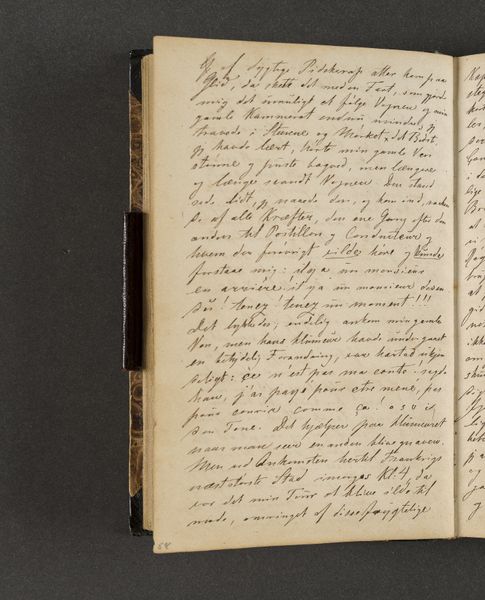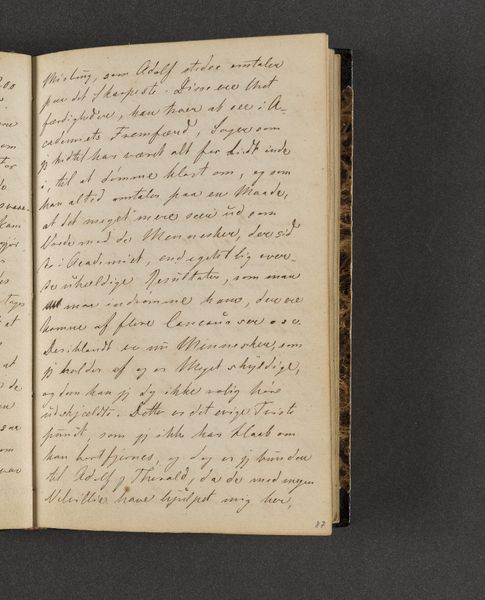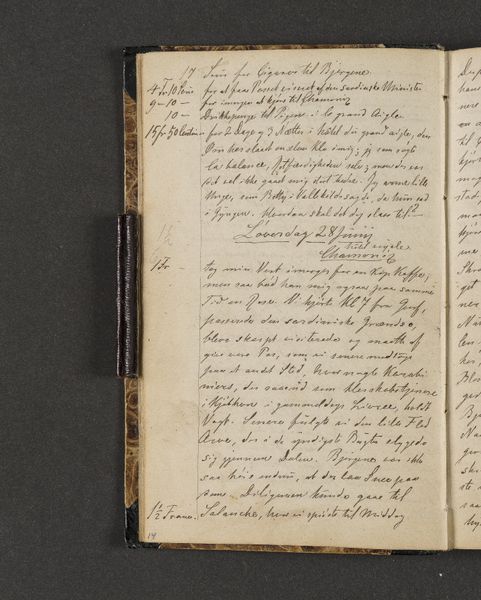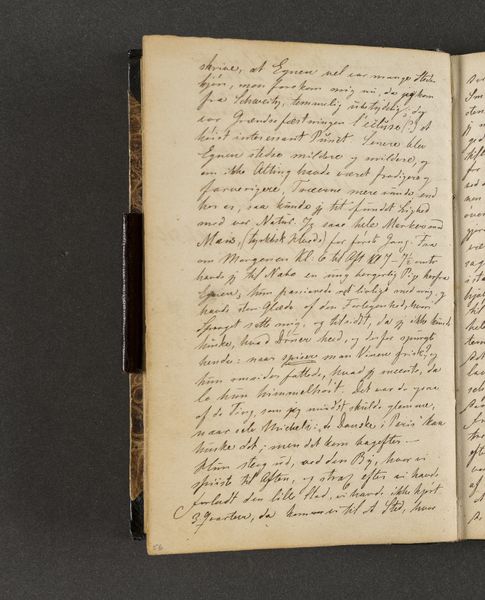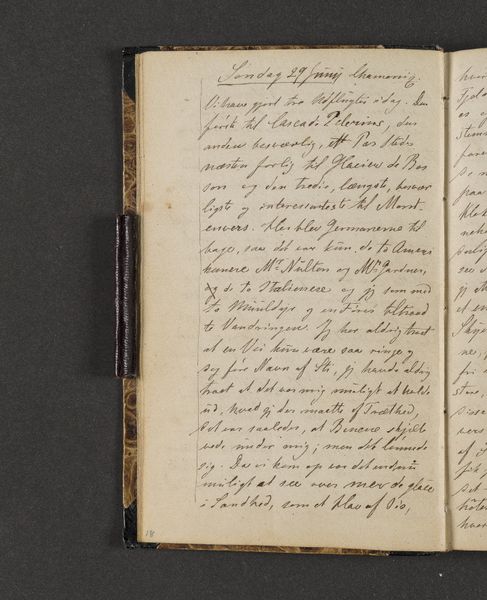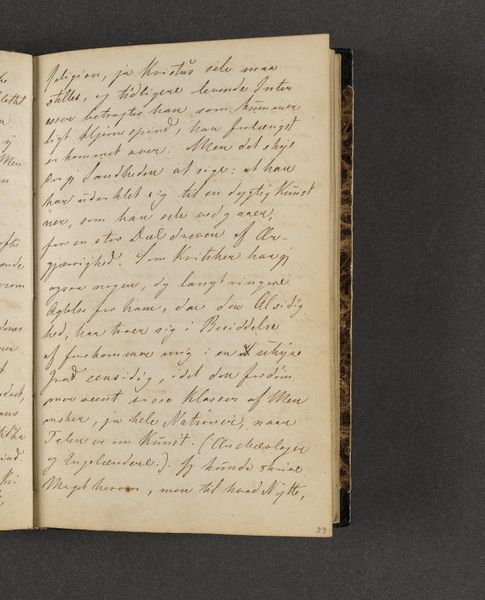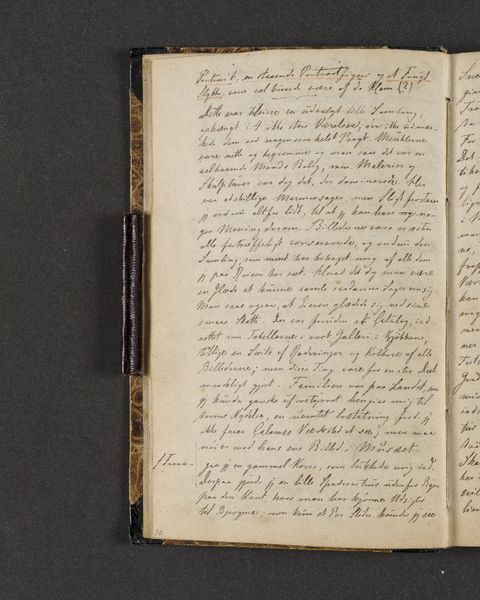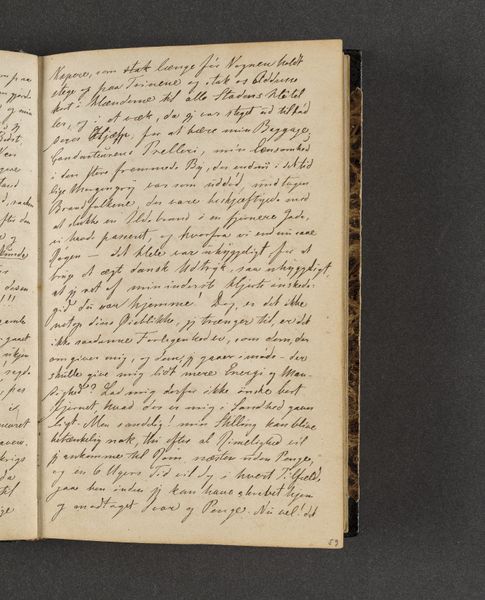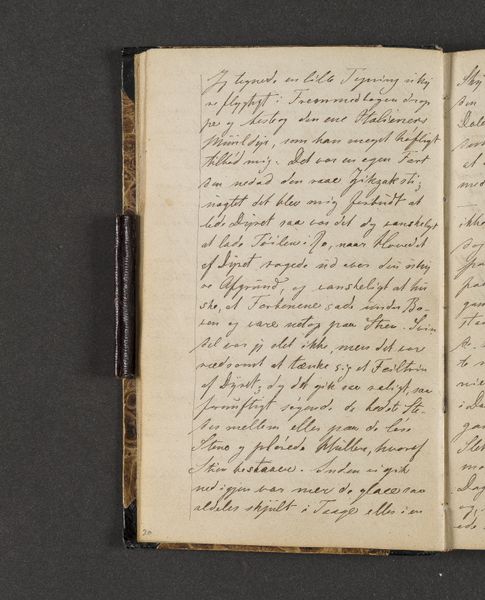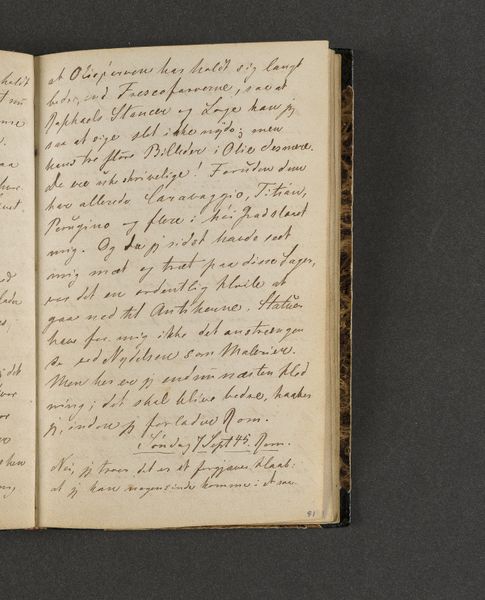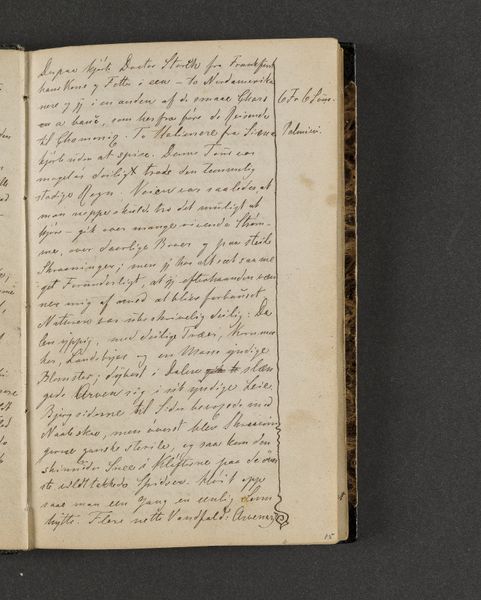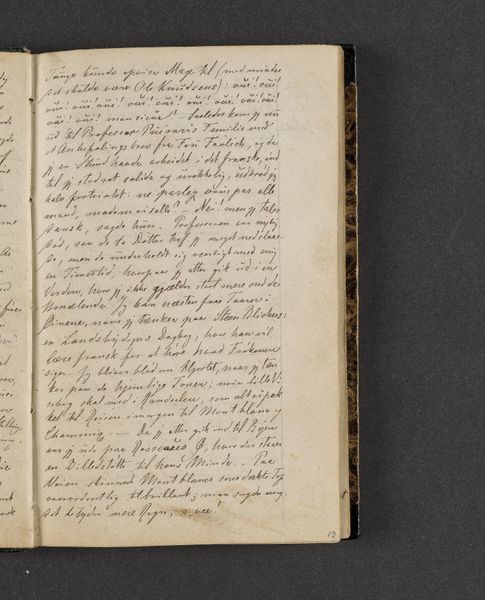
drawing, paper
#
drawing
#
paper
#
romanticism
Dimensions: 161 mm (height) x 103 mm (width) x 11 mm (depth) (monteringsmaal)
Curator: This unassuming drawing, "Rejsedagbog" from 1845 by Johan Thomas Lundbye, initially strikes one as simply a personal diary page. But let's think about its materiality – what story do the paper and ink themselves tell? Editor: Well, it feels very intimate, doesn’t it? The handwritten script, the aged paper…It gives the impression of someone carefully recording their thoughts. What else do you see in it? Curator: For me, the drawing opens a window into the daily practices of art production. Look at the deliberate act of inscription, the way Lundbye uses readily available materials – paper, ink, his own handwriting. It democratizes art-making; anyone with these basic tools could, in theory, engage in a similar process. Editor: So, it's less about the specific content of the diary and more about the *process* of creating it? Curator: Precisely! Romanticism often emphasizes the artist's individual genius. However, a materialist lens asks: what were the *conditions* that allowed Lundbye to create? Who produced the paper, the ink? What was the social value of handwriting versus printed text at that time? It reveals a whole network of labor and consumption tied into even this seemingly private act. Editor: That’s fascinating. I never thought about the art materials themselves holding so much cultural information. It makes me consider the means of production behind art, rather than just its aesthetic value. Curator: Exactly! It shifts our focus to the tangible aspects of creation. What happens to our understanding of Romanticism, then? Editor: This really opens up how I think about art. Thanks! I will not look at notebooks the same again. Curator: Nor will I! There's a compelling story hidden in the physical reality of even the most unassuming artwork.
Comments
No comments
Be the first to comment and join the conversation on the ultimate creative platform.
